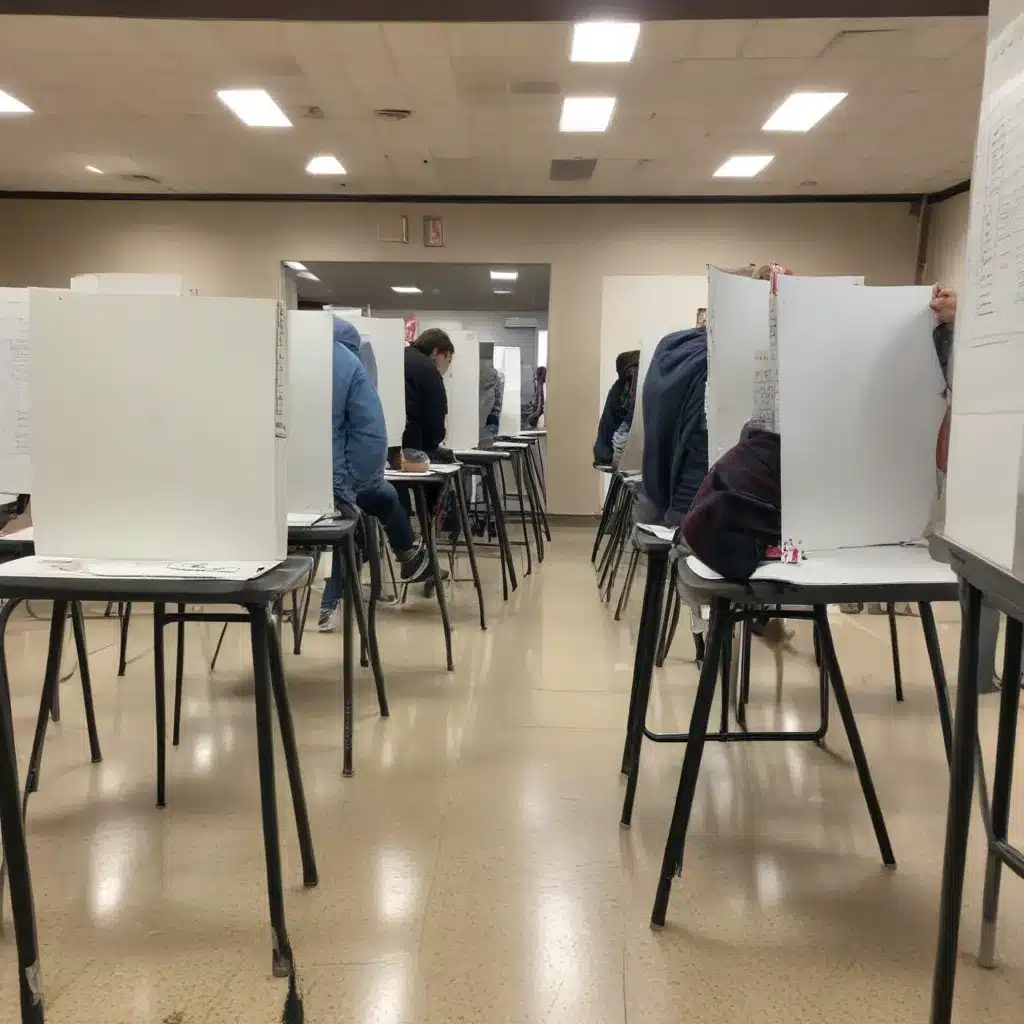
The Fight for Accessible Voting on Campus
In the battleground of Tarrant County, Texas, the 2024 election season sparked a fierce debate over the role of college polling sites. As students from the University of Texas at Arlington (UTA), Tarrant County College (TCC), and other local campuses geared up to exercise their civic duty, county officials found themselves at the center of a contentious decision that would shape the future of student voter engagement.
Mobilizing the Youth Vote
The University of Texas at Arlington (UTA) has long been a hub of political activity, with its Maverick Activities Center serving as one of the largest early voting locations in Tarrant County. In the 2020 presidential election, over 9,700 people cast their ballots at this campus site alone. As the 2024 election approached, UTA students like Yaseen Tasnif, a former resident assistant, took the lead in mobilizing their peers to participate.
“We have a lot of issues that we need fixed as college students, as people of color, but unfortunately, because we don’t show up to the polls enough, we don’t see accurate representation in politics,” Tasnif emphasized. Organizing campus-wide walks to the polls, Tasnif and his fellow students were determined to make their voices heard.
The Threat of Voter Suppression
However, their efforts faced a significant challenge in September 2024, when Republican County Judge Tim O’Hare proposed removing up to four college polling sites from the county’s early voting roster. Citing concerns over accessibility and the need to avoid catering to any single demographic group, O’Hare’s plan threatened to disenfranchise a significant portion of the student population.
“That doesn’t seem like the right way to run an election,” O’Hare argued. “That seems like it’s trying to favor one group over another. Not voter suppression.”
The move prompted an immediate outcry from students, faculty, and community advocates across Tarrant County. UTA freshman Trevor McCullough, a political science major and member of the student government’s legislative relations committee, addressed the county commissioners with a trembling voice, determined to defend the right to vote.
“We knew, number one, that it would go against everything we stood for — as student government and as Mavericks — to let something like that just slip by and hope for the best,” McCullough recounted.
Mobilizing a Diverse Coalition
The controversy over college polling sites highlighted the broader struggle for youth voter engagement, particularly among marginalized communities. Emeri Callaway, a pre-law and political science major at TCC Northeast campus, saw the situation as an opportunity to galvanize a diverse coalition of supporters.
“I would say that we just need to continue what we have been doing, which is reaching out to young Democrats, Dem supporters and even independents and moderate Republicans because we have a great slate of candidates,” Callaway said. “I am looking to turn blue at all levels of government.”
The Power of Grassroots Efforts
Volunteer deputy registrars at TCC’s Northeast campus in Hurst witnessed a remarkable shift in student interest compared to the previous spring. Barbara Leath, a Grapevine retiree and a longtime volunteer, noted the “night and day” difference, with students proactively approaching the registration table instead of waiting to be asked.
“When we came on campus this fall, our first day on campus — we should have had another person helping us, because we were so busy,” Leath recalled. The surge in student engagement underscored the power of grassroots efforts to empower young voters.
Navigating the Digital Landscape
As the campaign season progressed, the voter mobilization landscape evolved, with traditional tactics like campus displays and flyers giving way to a more digital-centric approach. James Riddlesperger, a TCU political science professor, observed this shift, noting that partisan electioneering is now primarily seen in the form of social media advertisements and targeted emails.
“It used to be that we would have a lot of bumper stickers and a lot of yard signs and a lot of flyers that were posted on campus. That was a very common thing to happen,” Riddlesperger said. “We’re seeing it primarily in the forms of political advertisements that come across people’s social media feeds and perhaps in emails that come to their email boxes.”
Leveraging Technology for Civic Engagement
While the digital landscape poses new challenges, it also presents opportunities for innovative approaches to voter mobilization. Organizations like the Joint Action for Water are exploring ways to harness technology to engage young people in critical issues such as water access, sanitation, and environmental sustainability – all of which have a direct impact on college communities.
By providing educational resources, fostering online dialogues, and empowering students to become advocates for their communities, these efforts aim to cultivate a generation of informed and engaged citizens who can make a lasting impact through the democratic process.
A Pivotal Moment for Student Voters
The controversy over college polling sites in Tarrant County underscored the broader importance of youth voter participation. As the 2024 election cycle unfolded, students and community leaders alike recognized the pivotal role that young people could play in shaping the future of their local, state, and national politics.
Through grassroots mobilization, digital outreach, and unwavering advocacy, the students of Tarrant County demonstrated their determination to exercise their right to vote and make their voices heard. As they navigated the complexities of the electoral process, they also paved the way for a more inclusive and representative democracy – one that empowers all citizens, regardless of age or background, to participate in the decisions that affect their lives.

